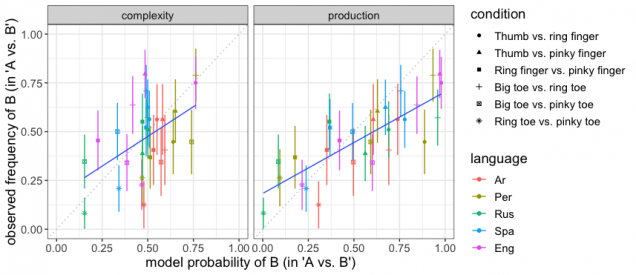New cross-linguistic paper on implicatures

Differences in implicature across languages
stem from differences in salience of alternatives
by Danielle Dionne & Elizabeth Coppock
Abstract
Scalar implicature depends on the activation of alternatives. For instance, in English,
finger implicates `not thumb’, suggesting that thumb is activated an alternative. Is this because it is more specific (Quantity) and equally short (Manner)? Indeed, toe doesn’t imply `not big toe’, perhaps because big toe is longer. As Larry Horn points out, this Quantity/Manner explanation predicts that if English had the simplex Latin word pollex meaning `thumb or big toe’, then the asymmetry would disappear. But would it suffice for that word to exist in the language, or would the word also have to be sufficiently salient? This thought experiment can be made into an actual one due to the existence of languages like Spanish, which has pulgar `thumb or big toe’ (< pollex), a non-colloquial form. To gauge the salience of various ways of describing digits, we use a fill-in-the-blank production task with both English, Spanish, Russian, Persian, and Arabic speakers. We then measure the availability of implicatures using a forced choice comprehension task. We find cross-linguistic differences in implicature, and moreover that implicature calculation tracks production probabilities much more closely than mere complexity of the alternatives. A comparison between two Rational Speech Act models — one in which the speaker perfectly replicates our production data and a standard one in which the speaker chooses based on a standard cost/accuracy trade-off — shows that comprehension is much more closely tied to production probability than to the mere existence of sufficiently simple alternatives.